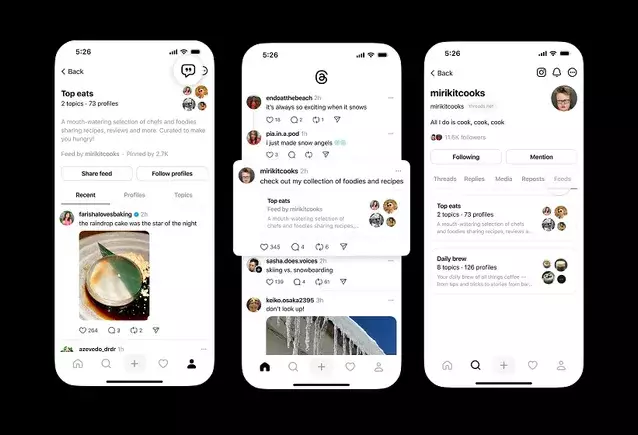As the digital landscape continues to evolve, so too does the way we interact within social media platforms. One of the most significant developments lately has been the introduction of Threads’ custom feed sharing feature. The aim is simple: to allow users to engage more dynamically with tailored content by sharing user-generated timelines focused on specific topics. However, as with any innovation in the rapidly shifting social media arena, it’s essential to critically assess whether this feature meets the needs and desires of users.
Threads has rolled out a capability that gives users the power to re-share custom feeds by employing a simple interface. This involves tapping on a quote icon while viewing a specific custom feed and then either creating a new thread or sharing the feed directly. This feature also introduces a “feeds” tab on user profiles, providing easy access to thematic lists devised by others. This could potentially enhance discoverability in a rather cluttered digital space.
While this upgrade sounds promising on paper, its effectiveness in enhancing user engagement remains to be seen. Historically, social media platforms have faced ups and downs in user engagement rates based on their offered functionalities. For example, while Twitter’s “lists” feature once held sway among its users, the current audience’s appetite for such structured content curation may not align with their preferences.
The expectation among users has shifted significantly in recent years. In the TikTok era, where algorithm-driven feeds can seamlessly present tailored content without the necessity of following individual accounts, many users may feel less inclined to invest time and energy into creating custom feeds. While the idea of curating a feed based on specific interests holds merit, it is crucial to consider how well it resonates with the average user who is accustomed to immediate gratification through algorithmic suggestions.
Moreover, while Threads and its new offerings aim to promote customization, many active users may still prefer the ease and spontaneity that comes with algorithmically curated feeds. The trend toward minimal active curation echoes a shift in user behavior—favoring platforms that provide a tailored experience without the need for extensive user input. This raises the question: will users embrace the labor of curating feeds, or will they opt for the path of least resistance?
The debate regarding the utility of custom feeds also hinges upon whether they serve the broader user base or cater primarily to “power users.” This term often refers to avid social media enthusiasts who thrive on engagement and content creation. Platforms like Bluesky, which feature similar custom feed functions—termed “Starter Packs”—seem to attract a tech-savvy audience that may relish the opportunity to curate content.
However, a significant portion of users in platforms like Threads are casual observers rather than active participants. For them, it’s crucial to have a streamlined experience that emphasizes ease of use over complexity. If only a fraction of users actively engage with such features, the viability of custom feed sharing might come into question. Engagement metrics suggest that often only a small percentage of users are responsible for generating the bulk of content, which raises concerns about how effectively these new features will enhance user interaction across the board.
While Threads’ latest iteration of custom feed sharing represents a leap towards more personalized interaction, one must consider whether this is truly in line with what users wish to see from the platform. With varying engagement rates on different social media networks, it’s essential to question if this feature adds tangible value or merely provides another option that may go unused.
While the introduction of custom feed sharing is a step toward reducing content overload by providing a more structured display of information, its reception will ultimately depend on user behavior and preference. As social media continues to adapt to users’ ever-evolving needs, platforms like Threads must remain agile, keeping a pulse on what features genuinely foster engagement rather than risking the dilution of user experience with underutilized tools. The coming months will undoubtedly reveal whether Threads can successfully navigate these waters and become a mainstay in users’ daily online interactions.


Leave a Reply